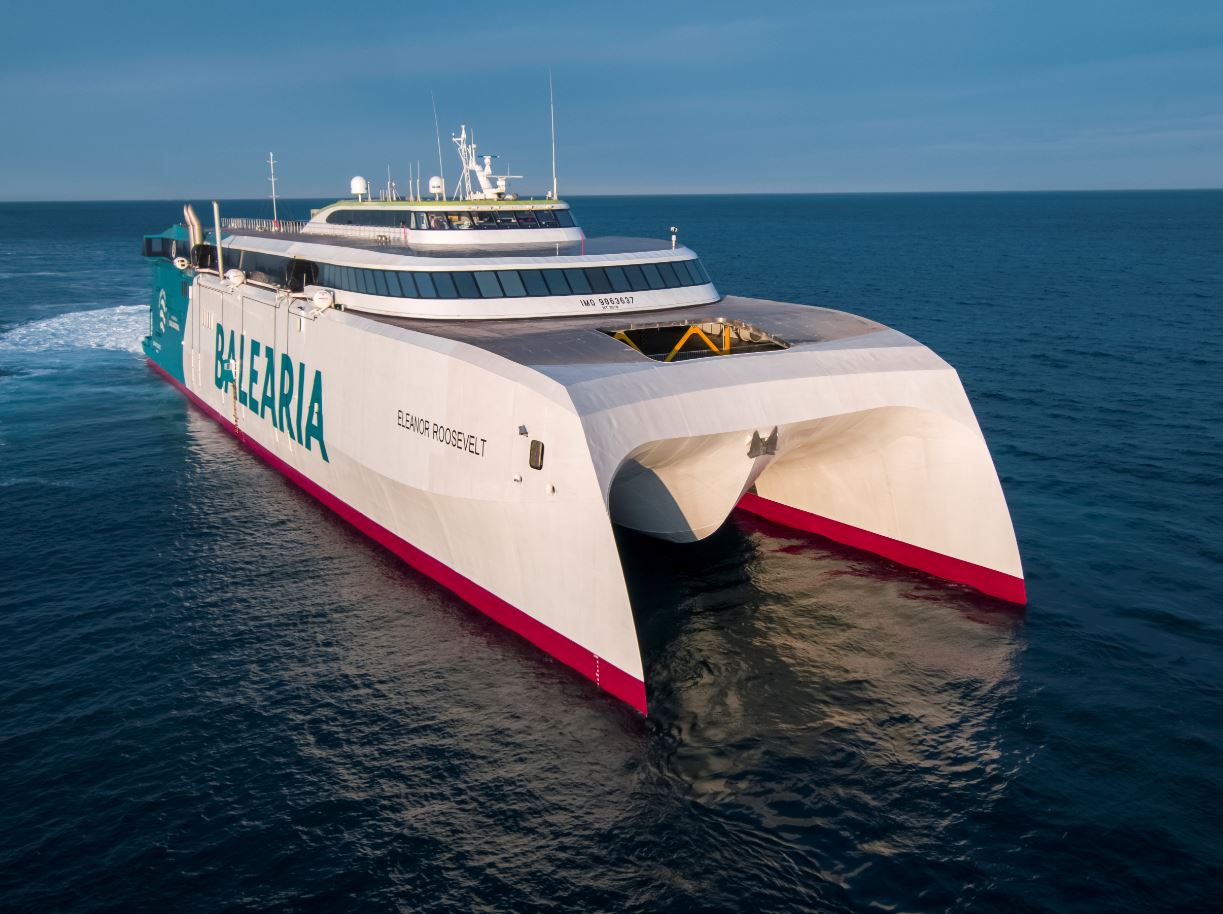A unit of Switzerland’s Axpo has joined forces with Spain’s Balearia in what it says is the first carbon-free high-speed ferry crossing in Europe.
Balearia’s first LNG-powered fast ferry Eleanor Roosevelt has completed a “test crossing using only fuel from 100% renewable sources,” Axpo said in a statement.
The ferry completed the route of 133 nautical miles between Barcelona and Ciutadella de Menorca using renewable biomethane certified by Axpo Iberia, the firm said.
With this, the LNG-powered ferry “avoided the emission of more than 50 tonnes of CO2 into the atmosphere.”
“The enormous challenges of achieving a carbon-free world demand the use of all the means at our disposal. This includes using energy produced from waste converted into biomethane,” Axpo Iberia managing director Ignacio Soneira, said.
“Thanks to the close cooperation with Axpo Iberia, we have today reached an important milestone on our way to emission-free ferry operations. We are counting on biomethane being available in sufficient quantities and affordable in the future to enable us to use this renewable fuel,” Adolfo Utor, president of Balearia, said.
First LNG-powered fast ferry
Following completion at shipbuilder Armon Gijon, Balearia took delivery of Eleanor Roosevelt in April.
The ferry operator claims the vessel to be the world’s first LNG-powered fast ferry for passengers and cargo.
Furthermore, the vessel features four Wartsila dual-fuel engines of 8,800kW each, allowing it to reach an operating speed of 35 knots.
Equipped with two LNG storage tanks, the twin-hull catamaran has an autonomy to sail up to 400 nautical miles.
In the case of combined LNG/diesel propulsion, this increases to 1,900 nautical miles, according to Balearia.
Moreover, the Incat-designed ship is 123 meters long with a 28 meters beam. It features a capacity to welcome 1200 passengers as well as 450 cars.

